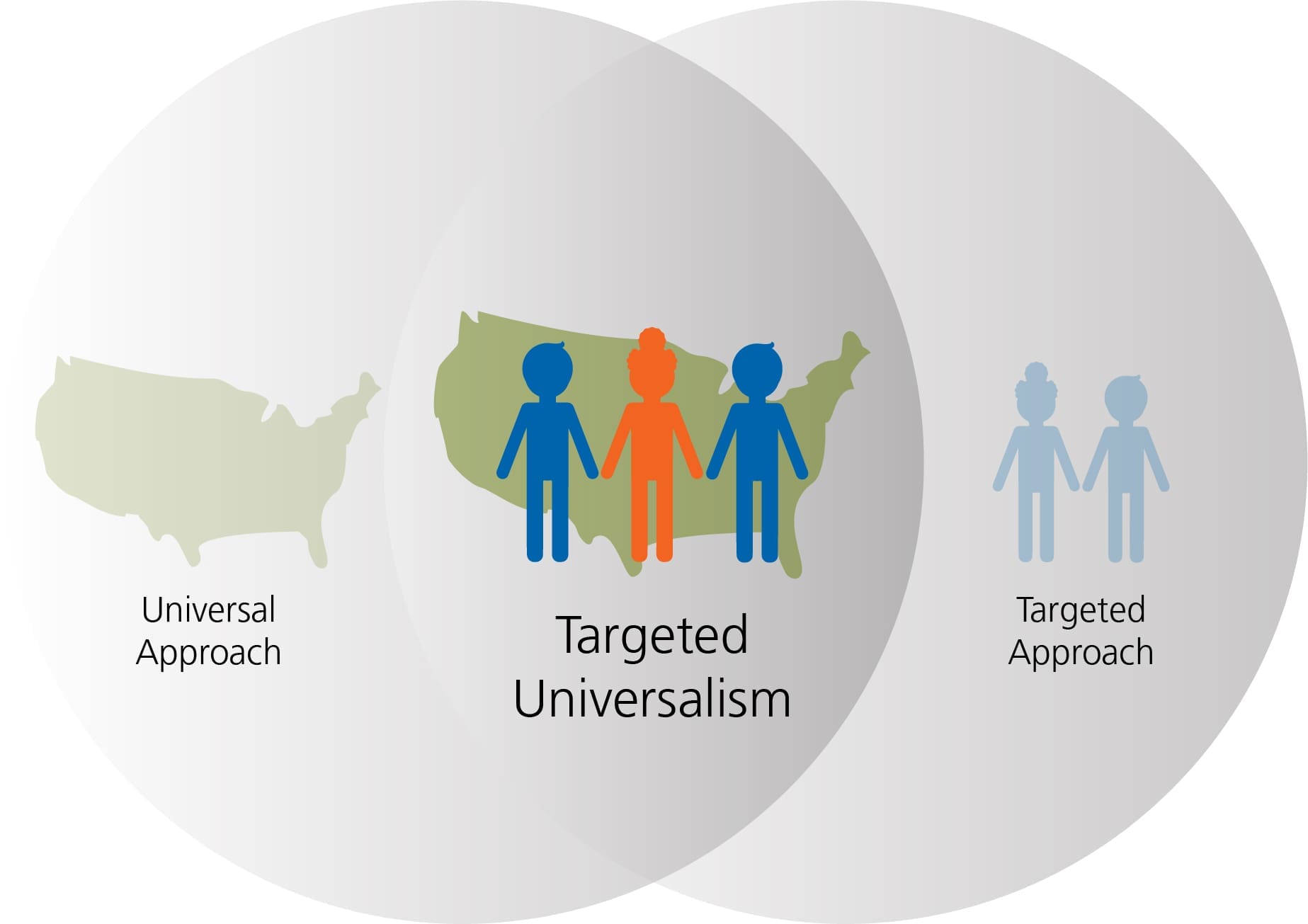
A collaborative effort, driven by a diverse group of stakeholders united behind a common goal, can serve as a catalyst for addressing inequities at a systems level. But beneath the unity of purpose, initial disagreement can arise when stakeholders have to decide how to invest in those with the greatest need without sacrificing community-level goals or appearing to favor one group over another.
When we recently faced this challenge within one community-based initiative, we turned to “targeted universalism,” an approach to change management that simultaneously aims for a universal goal while also addressing disparities in opportunities among sub-groups.
Originally developed by professor and critical race scholar john a. powell, targeted universalism (TU) is an inclusive approach for implementing population-level interventions. It focuses on elevating the disparate experiences of marginalized populations as an essential step in the development of contextually relevant strategies for achieving universal goals. As such, it’s a middle ground between a targeted and a universalist approach.
Targeted approaches ensure that groups that have been systemically excluded from opportunity receive appropriate resources to account for inequities. Examples include the Americans with Disabilities Act and inclusive college admission policies. However, targeted approaches are sometimes critiqued for favoring specific population segments and can reduce buy-in or deepen stereotypes.
At the same time, we have seen that universal approaches can sometimes deepen inequities—the political adage “a rising tide lifts all boats” only applies when all are equipped with adequate boats to begin with. For instance, the post-World War II GI Bill was ostensibly created to benefit the general population. However, as banks generally wouldn’t make loans for mortgages in black neighborhoods, it ultimately exacerbated inequality by exclusively offering mortgage assistance to a specific group of Americans.
TU offers a blended method. Through this approach, universal goals (e.g., 100% math proficiency among all eighth-grade students; improve employment outcomes for young adults) can be achieved by deploying targeted approaches that address the varying needs and circumstances of each group (e.g., provide ESL specific math tutoring; identify opportunity youth facing structural barriers and pair them with local mentors to help them access available employment options).
Through our work, we’ve identified 3 practices that can help a group of diverse stakeholders understand and embrace the power of TU:
- Help everyone understand local disparities by disaggregating data.
- Clarify options, including an overview of how targeted universalism can be used in practice.
- Make space and time for difficult conversations, and allow representative voices from the community to discuss concerns, opportunities, and tradeoffs associated with population-level outcomes.
Learn more about these insights in Getting to Yes: How to Generate Consensus for Targeted Universalism >
Learn more about FSG’s collective impact services >
